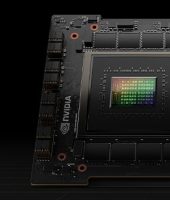The first phase of what will be the fastest public research supercomputer in the Southern Hemisphere has been unveiled at its new home at the Pawsey Centre in Western Australia, resplendent in artwork that reflects the skies it will help researchers to unlock.
Stage 1 of Pawsey’s new $48 million HPE Cray EX supercomputer known as Setonix – the scientific name for Western Australia’s cheerful marsupial, the quokka – now stands in the white space at the Pawsey Centre next to its supercomputer cousins, Magnus and Galaxy.
Stage 1 delivery of Setonix will increase the computing power of the centre by 45 per cent and when fully operational, Setonix will be up to 30 times more powerful than Pawsey’s existing two systems combined.
It promises a potential peak of 50 petaFLOPS of compute power, making it the fastest research supercomputer by far in Australia and across the Southern Hemisphere.
Pawsey Centre Executive Director Mark Stickells says through Setonix, Australia is on the cusp of the biggest computing power advance in the nation’s history.
“This new system will accelerate discovery and enable more universities, scientific institutions and researchers — as well as our partners in industry and business — to access next-generation computing speed and data analysis,” he said.
“Setonix marks a step change in Pawsey’s supercomputing firepower, and this additional capacity will allow more researchers and industries to access next-generation computing speed and data analysis.”
Pawsey currently supports the work of more than 2600 Australian and international researchers from its Perth facility but expects to be able to support more projects and contribute additional space to the national merit pool thanks to additional capacity.
Stage 1 will see a team of early adopter researchers run code to fine tune Setonix before it becomes available to 2022 allocations early in the year.
Stage 2 will be delivered by mid-2022 and will be operational in the second half of the year.
The first look at Setonix reveals cabinets that continue the theme of Indigenous art casing that began with Magnus.
Wajarri Yamatji visual artist Margaret Whitehurst produced the artwork for Setonix, inspired by the stars that shine over Wajarri country in Western Australia’s Mid-West.
“Margaret’s design is a beautiful representation of a tradition of Aboriginal astronomy that dates back thousands of years,” Mr Stickells says.
“Margaret and the Wajarri people are the traditional owners of CSIRO’s Murchison Radio-astronomy Observatory in Western Australia where one part of the world’s largest radio astronomy observatory, the Square Kilometre Array, will be built.
“Setonix will process vast amounts of radio telescope data from SKA-related projects, and many other projects of national and international significance that we are proud to support.”
Setonix will include an eight-cabinet HPE Cray EX system built on the same architecture used in world-leading exascale supercomputer projects when fully deployed.
It will include more than 200,000 AMD compute cores across 1600 nodes, over 750 next-generation AMD GPUs, and more than 548 TB of CPU and GPU RAM, connected by HPE’s Slingshot interconnect.
It will eventually deliver at least 200Gb/sec of bandwidth into every compute node, and 800Gb/sec into the GPU nodes, as well as interoperability with the Pawsey Centre ethernet networks.
Pawsey will be hosting an AskMeAnything session on Setonix on October 4th, 10 am (AWST) you can register and post your question ahead of time here.

Meteorites by Margaret Whitehurst.

Setonix Phase 1 is currently sitting next to Magnus

